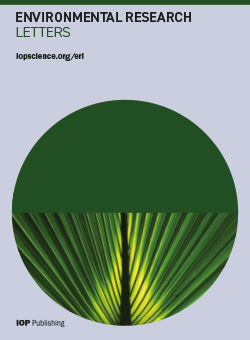Human arsenic exposure risk via crop consumption and global trade from groundwater-irrigated areas
Abstract
While drinking water is known to create significant health risk in arsenic hazard areas, the role of
exposure to arsenic through food intake is less well understood, including the impact of food trade.
Using the best available datasets on crop production, irrigation, groundwater arsenic hazard, and
international crop trade flows, we estimate that globally 17.2% of irrigated harvested area (or 45.2
million hectares) of 42 main crops are grown in arsenic hazard areas, contributing 19.7% of total
irrigated crop production, or 418 million metric tons (MMT) per year of these crops by mass.
Two-thirds of this area is dedicated to the major staple crops of rice, wheat, and maize (RWM) and
produces 158 MMT per year of RWM, which is 8.0% of the total RWM production and 18% of
irrigated production. More than 25% of RWM consumed in the South Asian countries of India,
Pakistan, and Bangladesh, where both arsenic hazard and degree of groundwater irrigation are
high, originate from arsenic hazard areas. Exposure to arsenic risk from crops also comes from
international trade, with 10.6% of rice, 2.4% of wheat, and 4.1% of maize trade flows coming from
production in hazard areas. Trade plays a critical role in redistributing risk, with the greatest
exposure risk borne by countries with a high dependence on food imports, particularly in the
Middle East and small island nations for which all arsenic risk in crops is imported. Intensifying
climate variability and population growth may increase reliance on groundwater irrigation,
including in arsenic hazard areas. Results show that RWM harvested area could increase by 54.1
million hectares (179% increase over current risk area), predominantly in South and Southeast
Asia. This calls for the need to better understand the relative risk of arsenic exposure through food
intake, considering the influence of growing trade and increased groundwater reliance for crop
production.

